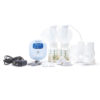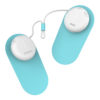How to get the “feel” for breastfeeding?

How to get the “feel” for breastfeeding?
There are countless articles, books, and websites that explain everything you need to know about how to breastfeed. These instructions, however, often ignore the fact that breastfeeding is an interactive experience, dependent on the communication between you and your baby. It’s not a matter of placing Point A (baby’s mouth) over Point B (mother’s breast) and commencing breastfeeding. It’s much more like a dance that engages the whole body. Each breastfeeding duo sets its own rhythm and pace.
Instinct is still the key.
There are some things in life that are best learned by tapping into our left-brain, the analytical, rational hemisphere where logic is king. Then there is the right brain, a more holistic and intuitive way to learn. Some things you process best by intellect, others by experience. Breastfeeding falls under the latter.
Mothers and babies have physiological responses that draw them to each other, encourage them to look at each other, touch each other, and interact. Much of this behaviour is guided by the right side of the brain. We need to listen to and trust this more.
It’s time to take a right-brained approach to breastfeeding.
How exactly do you use a right-brained approach to learning to breastfeed? First, take some deep breaths and let go of those worries about doing things “wrong.” Instead of thinking of breastfeeding as a skill you need to master, or a measure of your worth as a mother, think about breastfeeding as an expression of you and your baby’s relationship. As you spend time with your baby, you’ll become more adept at reading their cues. As you hold your baby, they will become more comfortable seeking your breast.
Breastfeeding will flow naturally out of your affectionate relationship. And your body dynamics can make breastfeeding easier or harder.
Here are some specific things you can do to help:
Watch for early feeding cues.
These cues could include turning their head when someone touches their cheek or a hand-to-mouth motion. Take note of when baby starts smacking their lips or putting their hands to her mouth. This is an ideal time to try breastfeeding.
Start with a calm baby.
One mistake that many women make is waiting until their baby is screaming to try breastfeeding. Do you learn best when you are upset? Probably not. The other reason to start with a calm baby comes down to physics. When a baby is screaming, their tongue is on the roof of her mouth. You will never get your breast in their mouth when their tongue is there.
Unfortunately, it may not always be possible to catch your baby in the early hunger stages (such as when you’re sound asleep!) and you will have to deal with an upset baby. Some babies go from slightly hungry to very hungry in the blink of an eye. Sometimes offering your breast will work to calm your baby. But if this doesn’t work, don’t force the issue. First, try soothing your baby by holding, swaying, rocking, or walking. Then try these suggestions:
- Lean back in a comfortable position. Semi-reclined positions in which your back, neck, shoulders, and arms are well-supported are sometimes referred to as laid-back. breastfeeding. These may be the same position you use to watch your favorite TV show.
- Lay your baby, tummy down between your breasts. Your baby can be either dressed or stripped down to her diaper. Then make your breast accessible. Your chest is a very calming place for your baby. She can hear your voice and your heartbeat. She can smell you and get the feeling of your skin. Talk with her and make eye contact to bring you closer to your baby.
- Follow your baby’s lead. When a calm baby lies tummy down on her mother’s laid-back body, this triggers instinctive feeding behaviours such as head-bobbing and movements toward the breast. If she is lying between your breasts, she probably won’t need much help. Encourage her with your voice. Babies can’t understand your words at this age, but they can understand your tone of voice. And feel free to touch and stroke her as the spirit moves you.
Play while you learn to breastfeed.
Rather than worrying about doing things wrong, focus on your relationship with your baby and think of breastfeeding as a part of this larger whole. Breastfeeding often flows naturally from this attitude. Sometimes your baby may try to take the breast even when they’re not really hungry, just to try out this new behaviour. Practice times are good and will help them breastfeed better when they are hungry. Try out different latching and breastfeeding positions and feel out which ones work best for you and your baby. Remember, instinct is key, trust it.
Adapted from the book Breastfeeding Made Simple: Seven Natural Laws for Nursing Mothers by Nancy Mohrbacher, IBCLC, FILCA and Kathleen Kendall-Tackett, PhD, IBCLC







